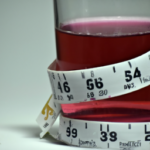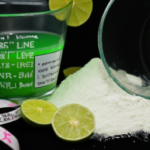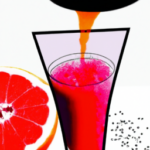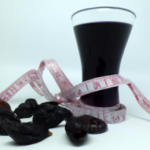Juice Tips and Tricks
How Many Carbs In 8 Oz Of Orange Juice

As someone who values health, I am diligent about monitoring my carb intake. Carbs are essential nutrients that provide energy, but consuming too much can lead to weight gain and health issues. That’s why it’s important to be aware of the carb content in the foods and beverages we consume, like orange juice.
Orange juice is a popular beverage that many people enjoy for its refreshing taste and nutritional benefits. However, it’s also important to be mindful of its carb content, especially if you’re following a low-carb diet or trying to maintain a healthy weight.
In this article, we’ll explore the carb content of 8 oz of orange juice, factors that can affect it, and tips for reducing carb intake while still enjoying this delicious drink.
Key Takeaways
- An 8 oz serving of orange juice contains about 26 grams of carbohydrates, which can be difficult to fit into certain low-carb diets.
- Alternatives to orange juice include grapefruit juice, lemon juice, green juice, and coconut water, which are low in sugar and carbs and packed with nutrients.
- Diluting orange juice with water can reduce sugar and carb content, and choosing smaller portions can also reduce sugar and carb intake.
- Nutrition labels are crucial for maintaining a healthy diet and provide information about the amount of carbs in orange juice, serving size, number of servings per container, and daily intake of nutrients. Double-checking information is important.
The Importance of Knowing Carb Intake
Knowing your carb intake is crucial, as it can affect your overall health and wellness. Carbohydrates are one of the three macronutrients that our body needs to function properly. They are the primary source of energy for our body, and hence, it’s essential to track and balance our carb intake.
Consuming too many carbs can lead to weight gain and increase the risk of developing chronic diseases such as diabetes, heart disease, and cancer. Managing carb intake for overall health and wellness is a vital component of a healthy lifestyle. It’s crucial to understand the role of carbohydrates in our body and how they affect our health.
By balancing our carb intake, we can maintain a healthy weight, improve our energy levels, and reduce the risk of developing chronic diseases. Now, let’s dive deeper into what carbohydrates are and how they affect our body.
What Are Carbohydrates?
As the saying goes, ‘you are what you eat,’ and one of the essential components of a healthy diet is the nutrient that gives us energy: carbohydrates. Carbohydrates are one of the three macronutrients that provide energy to our bodies, with the other two being protein and fat. They are made up of sugars, starches, and fibers, which are broken down and used by our bodies as a source of fuel.
There are two types of carbohydrates: simple and complex. Simple carbohydrates are made up of one or two sugar molecules and are found in foods such as fruits, milk, and candy. Complex carbohydrates are made up of three or more sugar molecules and are found in foods such as whole grains, vegetables, and beans. While carbohydrates are essential for providing energy to our bodies, consuming too much of them can lead to negative effects such as weight gain and an increased risk of chronic diseases like diabetes and heart disease.
Moving on to the next section about orange juice as a source of carbs, it’s important to keep in mind the types of carbohydrates and the effects of excess carb consumption.
Orange Juice as a Source of Carbs
You might be surprised to learn that your morning glass of OJ is actually a significant source of energy for your body. Orange juice is a popular choice for breakfast because of its nutritional benefits. It is rich in vitamin C, folate, potassium, and other essential vitamins and minerals. However, it’s also important to note that orange juice is high in sugar content, which makes it a significant source of carbohydrates.
One eight-ounce serving of orange juice contains about 26 grams of carbohydrates, most of which come from naturally occurring sugars. These carbohydrates are broken down by the body and converted into glucose, which provides the body with energy. While orange juice is a good source of carbs, it’s important to consume it in moderation, especially if you’re watching your sugar intake.
As we move onto the next section about factors affecting carb content, it’s interesting to note that the amount of carbohydrates in orange juice can vary depending on a number of factors. Factors such as the type of orange used, the ripeness of the fruit, and the processing method used can all affect the sugar content of orange juice.
Let’s take a closer look at these factors to better understand how they impact the carbohydrate content of orange juice.
Factors Affecting Carb Content
Did you know that the carb content of your favorite breakfast drink can vary depending on factors like the type of fruit used and the processing method?
Factors influencing glycemic index, such as ripeness and sugar content of the fruit, can affect the amount and rate of carb absorption. For example, a ripe orange will have a higher glycemic index and contain more carbs than an unripe one.
Additionally, the processing method can impact the carb content, with some methods like juicing removing the fiber that helps slow down carb absorption, resulting in a higher glycemic index.
The impact of processing on carb content can also vary depending on the type of processing. For instance, pasteurization, a common method used to extend the shelf life of orange juice, can reduce the carb content by breaking down some of the sugars. However, other processing methods like adding sugar or concentrate can increase the carb content.
Therefore, it’s important to consider the factors that influence carb content when choosing your breakfast drink.
When it comes to the average carb content of 8 oz orange juice, it can vary depending on several factors.
Average Carb Content of 8 oz Orange Juice
Get ready to be surprised by the amount of sugar in your morning glass of OJ! As someone who is conscious of carb counting, it is important to know the average carb content of 8 oz of orange juice. According to the United States Department of Agriculture (USDA), an 8 oz serving of orange juice contains an average of 26 grams of carbs. This means that a single glass of orange juice can quickly add up to your daily carb intake, especially if you are someone who enjoys multiple servings of juice throughout the day.
To put this into perspective, take a look at the table below that compares the carb content of 8 oz of orange juice to other common juice consumption choices. As you can see, many fruit juices have a similar amount of carbs per serving, and even some vegetable juices contain a surprising amount of carbs. It’s important to keep this in mind when planning your daily carb intake and making choices about what to drink.
| Juice Type | Serving Size | Carbs per Serving |
|---|---|---|
| Orange Juice | 8 oz | 26g |
| Apple Juice | 8 oz | 28g |
| Grape Juice | 8 oz | 36g |
| Pineapple Juice | 8 oz | 32g |
| Carrot Juice | 8 oz | 13g |
With this information in mind, it’s important to consider how orange juice fits into a low-carb diet. While it can certainly be a part of a balanced diet in moderation, it’s important to be mindful of the carb content and make choices that align with your personal dietary goals.
How Orange Juice Fits into a Low-Carb Diet
Squeezed from the fruit of sunshine, orange juice can be a tricky addition to a low-carb diet. While it’s a good source of vitamin C, it’s also high in sugar and carbs. This can make it difficult to fit into certain low-carb diets, such as the ketogenic diet, which restricts carb intake to less than 50 grams per day.
However, there are different types of low-carb diets, and some allow for moderate amounts of carbs from sources such as fruits and vegetables. In these diets, orange juice can be consumed in moderation as part of a balanced diet. It’s important to consider the overall carb intake for the day and to choose other low-carb foods that provide similar benefits of vitamin C.
As an alternative to orange juice, other low-carb options include lemon water, unsweetened tea, or infused water with citrus fruits. These options provide hydration and flavor without the added sugar and carbs of orange juice.
Overall, it’s important to consider the specific low-carb diet being followed and to make choices that fit within its guidelines while still providing necessary nutrients.
Alternatives to Orange Juice
As I mentioned earlier, orange juice can be tricky to incorporate into a low-carb diet. But fear not, because there are plenty of delicious juice alternatives that are just as healthy and refreshing.
Here are a few options to consider:
-
Grapefruit juice is packed with vitamin C and antioxidants. It’s also lower in sugar and carbs than orange juice.
-
Lemon juice is a great option for adding flavor to water or other beverages. It’s low in carbs and calories, and it can help aid in digestion.
-
Green juice is typically made from leafy greens like kale and spinach, along with other vegetables and fruits. It’s low in sugar and carbs, and it’s packed with vitamins and minerals.
-
Coconut water is a great choice if you’re looking for a hydrating and low-carb option. It’s also rich in potassium and electrolytes, making it a great option for post-workout hydration.
Not only do these juice alternatives offer a lower carb option, but they also provide a range of health benefits. From vitamins and antioxidants to hydration and digestion, these delicious beverages can help support a healthy lifestyle. Now, let’s explore some tips for reducing carb intake from orange juice.
Tips for Reducing Carb Intake from Orange Juice
I’ve learned that there are healthier alternatives to orange juice, but I still enjoy drinking it occasionally. To reduce my carb intake from orange juice, I’ve started diluting it with water. This gives me the same refreshing taste with fewer carbs per serving.
Additionally, I’ve started choosing smaller portions of orange juice to further decrease my carb intake.
Diluting Juice with Water
You can easily reduce the amount of carbs in your orange juice by diluting it with water, making it a healthier and less sugary option. This is a simple and effective way to cut down on the sugar content while still enjoying the refreshing taste of orange juice.
Here are some tips to help you determine the best juice-to-water ratio for your taste preferences:
- Start with a 1:1 ratio of juice to water and gradually adjust the ratio to suit your taste.
- Use cold water to dilute the juice, as it’ll help to preserve the flavor and freshness of the juice.
- Experiment with different types of water, such as sparkling or flavored water, to add some variety to your drink.
By diluting your orange juice with water, you can significantly reduce the carb content while still enjoying the sweet and tangy taste. However, choosing smaller portions can also help to further reduce your carb intake and promote a healthier lifestyle.
Choosing Smaller Portions
Opting for a smaller serving size is like taking a step towards a healthier lifestyle without sacrificing the taste of your favorite drink. Portion control and mindful eating are essential when it comes to managing our daily calorie intake.
Drinking an 8 oz glass of orange juice may be refreshing, but it also contains a lot of sugar and carbohydrates. Choosing a smaller portion of orange juice, or diluting it with water, can help reduce the amount of sugar and carbs we consume. Additionally, it’s important to be mindful of the calories in 8 oz orange juice, which can add up quickly, especially if consumed in large quantities. By cutting back on the portion size or opting for water instead, you can still enjoy the flavor while keeping your overall calorie intake in check. Incorporating whole fruits into your diet offers a similar taste experience with added fiber and fewer sugars per serving. Moreover, whole fruits like oranges provide essential nutrients such as fiber, which helps slow down the absorption of sugar, making them a healthier alternative to juice. When opting for juice, it’s easy to overlook how the calories in 8 oz orange juice can add up over the course of a day if consumed frequently. Being mindful of the types of beverages we drink can ultimately contribute to better overall health and weight management.
When we practice portion control, we learn to listen to our bodies and stop eating or drinking when we feel satisfied, rather than overindulging. This simple habit can help us maintain a healthy weight and reduce our risk of developing chronic diseases. By choosing a smaller portion of orange juice, we can still enjoy its sweetness without consuming too much sugar.
It’s also important to remember that there are other sources of vitamins and minerals besides orange juice, so we don’t have to rely on it solely for our daily nutrition.
Being mindful of our portion sizes and choosing smaller servings of high-sugar beverages like orange juice can make a significant impact on our overall health. However, it’s also important to read the nutrition labels of our food and drink choices to ensure we’re consuming a balanced diet.
Importance of Reading Nutrition Labels
Make sure to always check the nutrition labels on your food and drink products, as they provide important information such as the amount of carbs in 8 oz of orange juice. Reading labels is an essential aspect of nutritional awareness and helps you make informed decisions about what you eat and drink.
Here are some reasons why reading nutrition labels is crucial for maintaining a healthy diet:
- It helps you monitor your daily intake of nutrients, such as carbohydrates, fats, protein, vitamins, and minerals.
- It allows you to compare products and choose the ones that are lower in calories, sugars, sodium, and saturated fats.
- It helps you avoid allergens or ingredients that you may be sensitive to, such as gluten, lactose, or soy.
- It informs you about the serving size and the number of servings per container, which can prevent overeating and unnecessary calorie intake.
- It empowers you to make healthier choices, as you become aware of the nutritional value of the foods and drinks you consume.
By taking the time to read nutrition labels, you can make small yet significant changes to your diet that can have a positive impact on your overall health and well-being. Remember to always double-check the information on the label and consult a healthcare professional if you have any concerns or questions.
Frequently Asked Questions
What is the recommended daily intake of carbohydrates?
Did you know that the recommended daily carbohydrate intake for adults is around 130 grams? However, reducing carb intake can lead to weight loss and improved blood sugar control. Following carbohydrate intake guidelines can optimize overall health.
What are some other sources of carbohydrates besides orange juice?
Carbohydrate sources are abundant in fruits, vegetables, whole grains, and beans. These foods provide essential nutrients and fiber, promoting healthy digestion and preventing chronic diseases. Knowing their nutritional value can help balance a well-rounded diet.
How does the sugar content in orange juice affect its carb count?
The sugar composition of orange juice affects its carb count, as carbohydrates come from sugars. The glycemic index of orange juice is high, meaning it can cause a rapid rise in blood sugar levels.
Can consuming too many carbohydrates have negative health consequences?
Did you know that consuming too many carbs can lead to health issues? Excess carbs can cause weight gain and increase the risk of diseases such as diabetes and heart disease. It’s important to monitor carb intake for better health.
How can I calculate the carb content of mixed fruit juices that include orange juice?
To calculate carbohydrates in mixed fruit juices, I check the nutritional value on the label and subtract the fiber. Some fruit juices, like orange, can have high carb content, so portion control is important.
Conclusion
Well folks, we’ve reached the end of our journey to discover just how many carbs are hiding in that innocent-looking 8 oz glass of orange juice. And let me tell you, the results are shocking.
Who knew that something as seemingly innocent as a glass of OJ could pack such a carb-filled punch?
But fear not, my low-carb friends, for there are alternatives to this sugary trap. Perhaps try swapping out that glass of juice for a refreshing glass of water or tea. And if you simply must have your orange fix, opt for a small piece of the real thing instead.
Remember, knowledge is power, and knowing the carb content of your favorite drinks and foods can help you make informed decisions about your diet.
So go forth, armed with the knowledge of carbs in orange juice, and make choices that will serve your health and wellness goals.
Susannah expertise lies in researching and compiling evidence-based content on juicing, nutrition, and overall health. She is committed to ensuring that The Juicery World offers accurate, up-to-date, and trustworthy information to empower readers to take control of their health. Susannah’s goal is to inspire individuals to embrace juicing as a way to nourish their bodies and live their best lives.
Juice Tips and Tricks
How to Make Aloe Vera Juice Taste Better

Tired of the strong flavor of aloe vera juice? No problem, we’ve got the answer for you.
In this article, we’ll share some tips and tricks to make your aloe vera juice taste better. We have tried and tested various methods to enhance the flavor without compromising the health benefits.
From choosing the right juice to adding natural sweeteners and infusing with fruits and herbs, we’ve got all the information you need to transform your aloe vera juice into a delightful and refreshing beverage.
Let’s dive in!
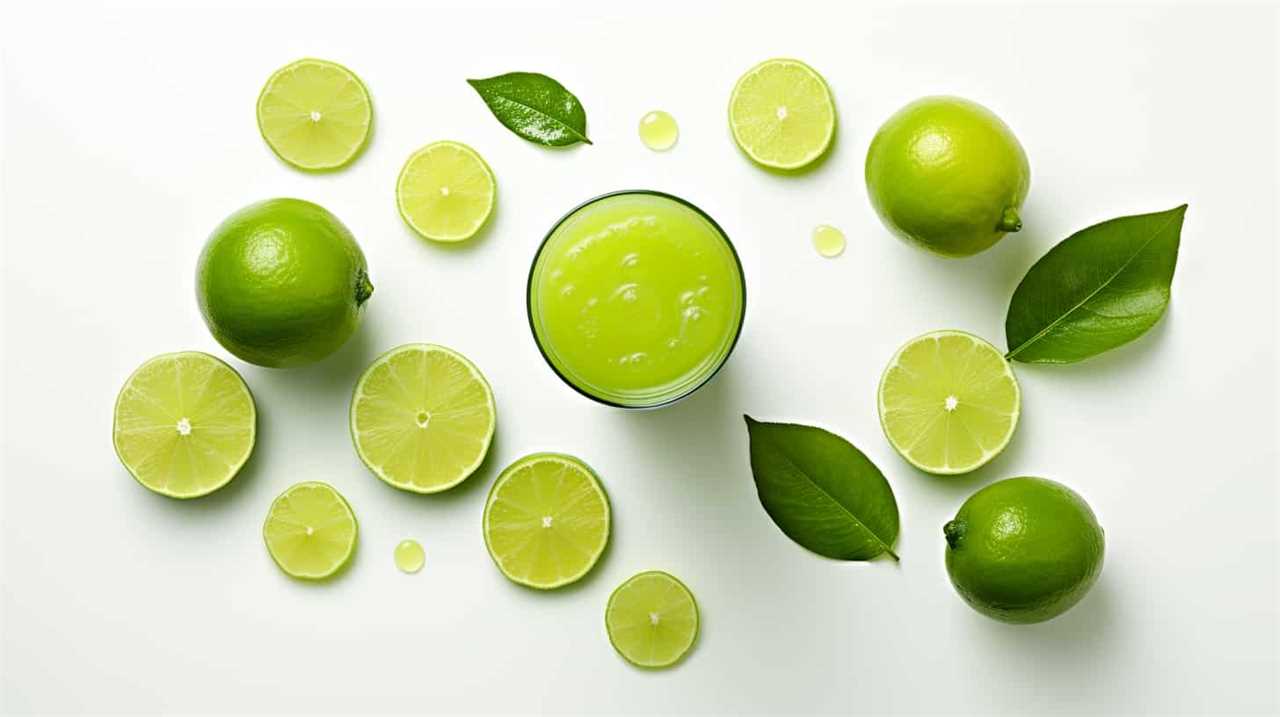
Key Takeaways
- Choose a reputable brand of aloe vera juice that prioritizes quality and uses organic, pure aloe vera.
- Avoid brands that contain added sugars or artificial ingredients.
- Use natural sweeteners like honey, agave syrup, or stevia to enhance the taste of aloe vera juice.
- Experiment with adding fruits, herbs, and other juices to create unique flavor combinations and enhance the health benefits of aloe vera juice.
Choosing the Right Aloe Vera Juice
We can enhance our experience with aloe vera juice by selecting the right brand and type for our preferences. When it comes to finding a reputable brand, it’s important to do some research and read reviews from other consumers. Look for brands that prioritize quality and use organic, pure aloe vera without any added sugars or artificial ingredients. Understanding the health benefits of aloe vera juice is also crucial in making the right choice. Aloe vera is known for its soothing properties, aiding digestion, promoting skin health, and boosting the immune system. By choosing a high-quality brand, we can ensure that we’re getting the maximum benefits from our aloe vera juice.
Now that we know how to choose the right brand, let’s move on to the next step of adding natural sweeteners.
Adding Natural Sweeteners
To enhance the flavor of our aloe vera juice, we can add natural sweeteners such as honey or agave syrup. Using alternative sweeteners not only adds sweetness but also brings unique flavors to the juice. Here are some options to consider:
- Stevia: A natural sweetener derived from the Stevia plant, it’s a zero-calorie alternative to sugar.
- Maple Syrup: This natural sweetener adds a rich and earthy flavor to the aloe vera juice.
- Dates: Pureed dates can be used to sweeten the juice while also providing essential nutrients like fiber.
In addition to using alternative sweeteners, we can enhance the flavor of aloe vera juice by adding spices and extracts. Cinnamon, ginger, or vanilla extract can add warmth and depth to the taste. By experimenting with different combinations of these natural sweeteners, spices, and extracts, we can create a flavor profile that suits our preferences.

Now, let’s move on to the next section and learn how to infuse aloe vera juice with fruits and herbs to further enhance its taste.
Infusing With Fruits and Herbs
As we explore ways to make our aloe vera juice taste better, one option to consider is infusing it with fruits and herbs. Creating unique aloe vera blends by adding fruits and herbs not only enhances the flavor but also adds a touch of freshness and complexity to the juice. For example, combining aloe vera juice with lemon, mint, or berries can create a refreshing drink that’s both delicious and packed with additional nutrients. It’s similar to the ease of making lemonade with bottled juice—quick, convenient, and customizable to suit your preferences. By experimenting with different fruit and herb combinations, you can elevate your aloe vera juice experience while still reaping its health benefits.
Fruits like strawberries, pineapple, or citrus can add a burst of sweetness, while herbs like mint, basil, or ginger can provide a subtle yet refreshing twist. Exploring the benefits of herbal infusions can also be beneficial for our health. For example, adding a few sprigs of lavender can promote relaxation and reduce stress. Additionally, infusing aloe vera juice with rosemary can aid digestion and boost the immune system.
Blending With Other Juices
Let’s try mixing aloe vera juice with different fruit juices to create delicious and refreshing blends. Blending aloe vera juice with other fruits not only enhances its taste but also adds nutritional benefits to your drink. Here are three fruit juices that you can mix with aloe vera juice:

- Orange juice: Combining aloe vera juice with orange juice not only adds a tangy flavor but also boosts your intake of vitamin C, which is essential for a strong immune system.
- Pineapple juice: Mixing aloe vera juice with pineapple juice creates a tropical blend that isn’t only refreshing but also helps in digestion. Pineapple contains bromelain, an enzyme that aids in breaking down proteins and promoting better digestion.
- Watermelon juice: Blending aloe vera juice with watermelon juice creates a hydrating and refreshing combination. Watermelon is rich in water content and contains electrolytes that can help replenish your body’s fluids.
Experimenting With Flavor Combinations
While we can try various flavor combinations with aloe vera juice, it’s important to find the right balance to enhance its taste. Experimenting with different flavors can’t only make the juice more enjoyable but also enhance its health benefits.
Aloe vera juice is known for its numerous health benefits, such as boosting digestion, promoting hydration, and supporting the immune system. By adding complementary flavors, we can create a refreshing summer drink that not only tastes great but also provides a nutritional boost.
Some popular flavor combinations include mixing aloe vera juice with citrus fruits like lemon or orange, adding a splash of coconut water for a tropical twist, or combining it with cucumber and mint for a refreshing and cooling effect.
Don’t be afraid to get creative and find the flavor combination that suits your taste buds best!
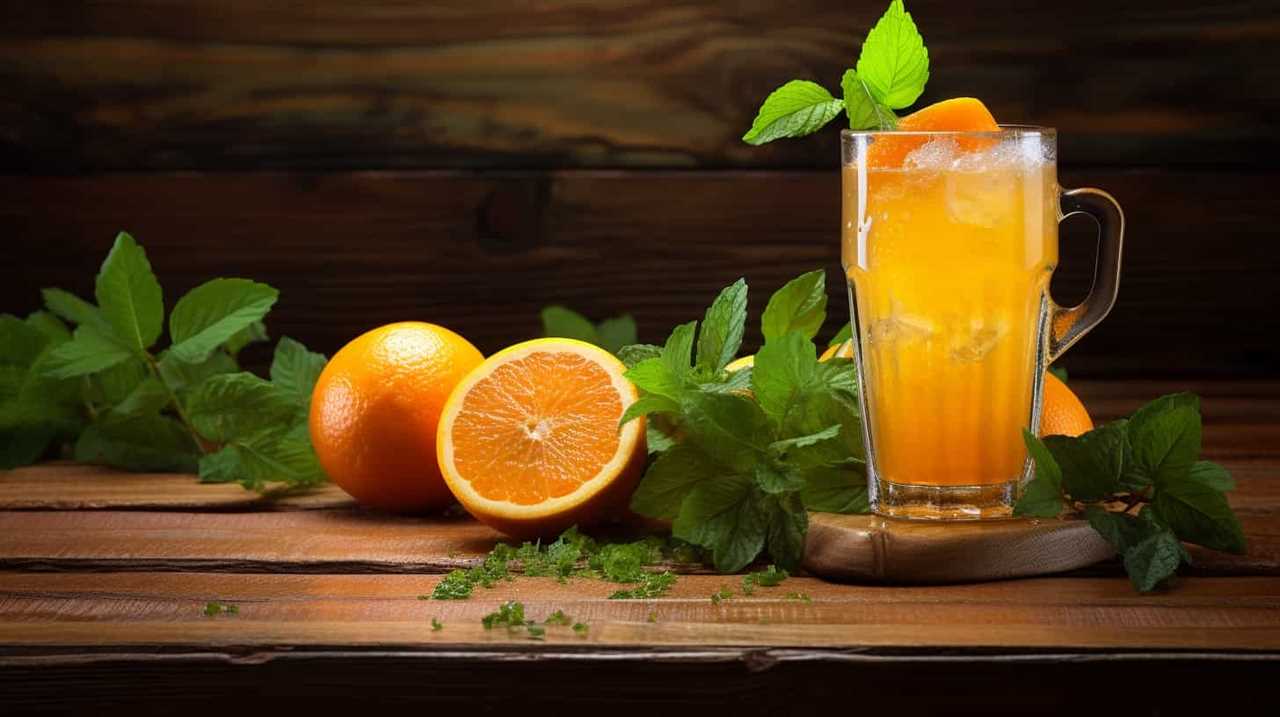
Frequently Asked Questions
Can I Use Store-Bought Aloe Vera Gel Instead of Fresh Aloe Vera for Making Juice?
Yes, you can use store-bought aloe vera gel instead of fresh aloe vera for making juice. However, it’s important to note that fresh aloe vera juice may have more health benefits due to its higher nutrient content.
How Long Can I Store Aloe Vera Juice in the Refrigerator?
Aloe vera juice can be stored in the refrigerator for up to a week. Refrigeration helps maintain the longevity and freshness of the juice, preserving its beneficial properties. It’s important to store the juice in an airtight container to prevent contamination and maintain its quality. Similarly, you might wonder *how long ginger juice lasts*; typically, fresh ginger juice can be refrigerated for about 1–2 weeks as well. Both aloe vera and ginger juices are best consumed within their shelf life to ensure maximum potency and health benefits. Additionally, freezing either juice can extend their shelf life, though some loss of nutrients and potency may occur during the process. When thinking about *how long fresh juice lasts*, it’s crucial to check for signs of spoilage, such as changes in smell, taste, or color, before consuming. To enjoy the best results, it’s always recommended to use fresh ingredients and properly store the juice to ensure you’re getting the most out of its health benefits.
Can Aloe Vera Juice Help With Digestive Issues?
Aloe vera juice can potentially help with digestive issues when taken in appropriate dosages. However, it is important to note that there may be potential side effects. It is always best to consult with a healthcare professional before starting any new supplement regimen.
Can I Use Artificial Sweeteners Instead of Natural Sweeteners in My Aloe Vera Juice?
Using artificial sweeteners in aloe vera juice may affect its taste and potential health benefits. However, natural sweeteners like honey or stevia can enhance the flavor without compromising its nutritional value.

Is It Safe to Drink Aloe Vera Juice Every Day?
Drinking aloe vera juice daily can have numerous benefits, such as improving digestion and boosting the immune system. However, consuming it regularly may also lead to potential side effects like diarrhea or stomach cramps.
Conclusion
In conclusion, making aloe vera juice taste better is easy and enjoyable.
By choosing the right aloe vera juice and adding natural sweeteners, infusing with fruits and herbs, blending with other juices, and experimenting with flavor combinations, you can create a delightful and refreshing drink.
So go ahead and unleash your creativity in the kitchen, and transform your aloe vera juice into a sensational elixir that will transport your taste buds to paradise.

Susannah expertise lies in researching and compiling evidence-based content on juicing, nutrition, and overall health. She is committed to ensuring that The Juicery World offers accurate, up-to-date, and trustworthy information to empower readers to take control of their health. Susannah’s goal is to inspire individuals to embrace juicing as a way to nourish their bodies and live their best lives.
Juice Tips and Tricks
How to Make a Glass of Lemonade With Bottled Lemon Juice

Are you craving a cool glass of lemonade to quench your thirst? Look no further! Try out our perfect recipe using bottled lemon juice that will surely please your taste buds.
In this article, we’ll guide you through the process of creating a tangy and sweet concoction that will leave you feeling refreshed and satisfied.
So grab your ingredients and let’s get started on this delightful journey of serving ourselves and others a glass of pure lemony goodness.
Key Takeaways
- Consider the storage of the bottled lemon juice (dark glass or plastic bottles, protect from light exposure, check expiration date)
- Choose a suitable pitcher and fresh lemons for enhanced flavor
- Store the lemonade concentrate in the refrigerator to maintain freshness
- Adjust the sweetness and tartness to taste with sugar or more lemon juice, and experiment with different sweeteners or additional flavors.
Choosing the Right Bottled Lemon Juice
What are the key factors we should consider when selecting the right bottled lemon juice for our lemonade?

One important factor is how the lemon juice is stored. Look for bottles that are made of dark glass or plastic, as they help protect the juice from light exposure, which can degrade its quality. It’s also important to check the expiration date to ensure freshness.
Another benefit of using bottled lemon juice is convenience. It saves time and effort compared to squeezing fresh lemons. Additionally, bottled lemon juice provides consistent flavor, as the acidity levels are standardized.
When selecting a brand, consider reading reviews and checking for certifications, such as organic or non-GMO.
Gathering the Necessary Ingredients and Tools
How can we gather all the necessary ingredients and tools to make a glass of lemonade with bottled lemon juice? First, we’ll need to collect bottled lemon juice, sugar, and cold water, as well as a pitcher and a spoon for mixing. If you prefer extra flavor, you can also gather ice and optional add-ins like mint or soda water. While preparing the lemonade, it’s easy to understand why some people wonder about other citrus drinks and may ask, “how many oranges per gallon” are needed when making orange juice instead. Once everything is assembled, combine the lemon juice, sugar, and water in the pitcher, stirring until the sugar dissolves. Feel free to adjust the sweetness or tartness to your liking, and don’t forget to add ice or any optional add-ins for an extra refreshing touch. This process might even make you curious about how much juice from oranges is needed when making fresh orange juice compared to using bottled citrus products. Once your lemonade is ready, pour it into a glass and enjoy the refreshing taste. This simple recipe can inspire you to try other homemade juices, such as learning **how to make pear juice** or experimenting with other fruit combinations. Whether you’re using fresh fruits or bottled options, creating your own beverages is a fun and rewarding way to personalize your drinks.
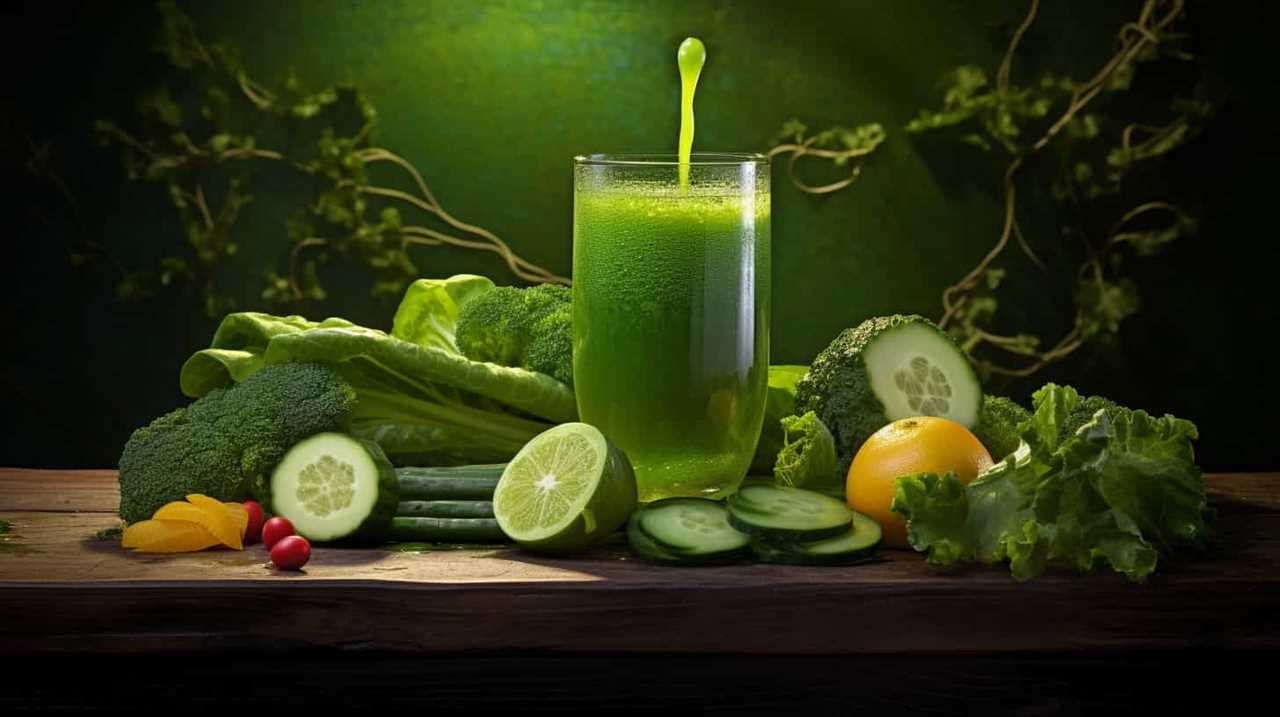
It’s important to start with the right pitcher. Look for a pitcher that’s made of glass or BPA-free plastic, as these materials won’t affect the taste of the lemonade. The pitcher should also have a lid or cover to keep the lemonade fresh and prevent spills.
Now, let’s talk about the lemons. While bottled lemon juice is convenient, using fresh lemons instead can elevate the flavor of your lemonade. Choose lemons that are firm and have a bright yellow color. Give them a gentle squeeze to ensure they’re juicy. To extract the juice, you’ll need a citrus juicer or a reamer. These tools make it easy to get every last drop of juice from the lemons.
Mixing the Lemonade Concentrate
To start mixing the lemonade concentrate, we’ll slowly pour the bottled lemon juice into the pitcher. It’s important to choose the right container for the lemonade concentrate. A pitcher with a lid or a tightly sealed container will help maintain the freshness and prevent any spills or leaks. Once the lemon juice is in the pitcher, we can move on to the next step of adding water and sweetener.
To ensure the lemonade concentrate stays fresh, it’s essential to store it properly. Keep the pitcher in the refrigerator to maintain its cool temperature and prevent any bacteria growth. If you have any leftover concentrate, transfer it to a smaller container with an airtight lid before refrigerating. This will help retain its flavor and prevent any contamination.
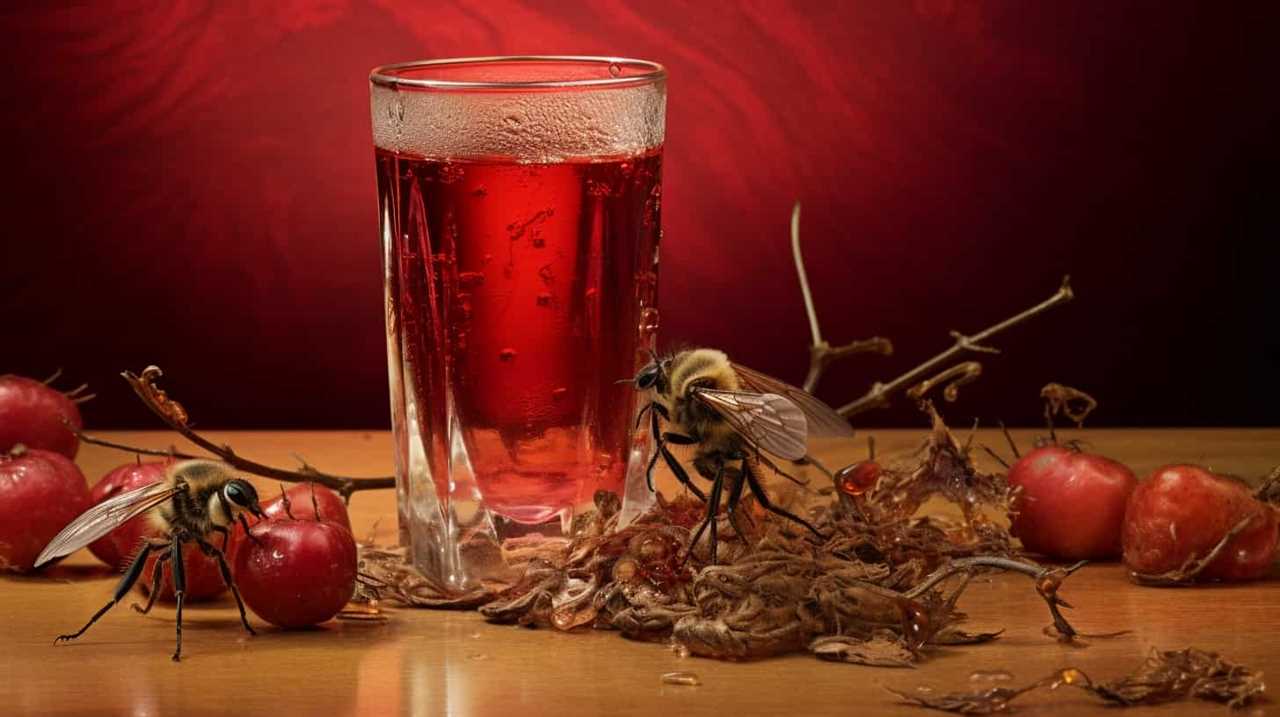
Now that we’ve mixed the lemonade concentrate, it’s time to adjust the sweetness and tartness to taste.
Adjusting the Sweetness and Tartness to Taste
We can adjust the sweetness and tartness of the lemonade to taste by adding more sugar or lemon juice, respectively. If you prefer a sweeter lemonade, simply add more sugar and stir until it dissolves completely. You can experiment with different sweeteners such as honey or agave syrup to find the perfect balance of sweetness.
On the other hand, if you want a tangier lemonade, add more lemon juice gradually, tasting as you go until it reaches your desired level of tartness.
Additionally, you can get creative with your lemonade by adding flavors like fresh mint leaves or a hint of lavender. These additions can elevate the flavor profile and create a more refreshing and unique experience.

Now that we’ve adjusted the sweetness and tartness of our lemonade, let’s move on to serving and enjoying your refreshing glass of lemonade.
Serving and Enjoying Your Refreshing Glass of Lemonade
Now let’s sit back, relax, and savor our refreshing glass of lemonade.
When it comes to serving and enjoying this delightful drink, there are a few techniques and garnishing options to consider.
Firstly, serving your lemonade chilled is essential for maximum enjoyment. Ensure that you have chilled glasses or add ice cubes to the glasses before pouring the lemonade.

To add a touch of elegance, you can garnish your lemonade with a slice of lemon on the rim of the glass. For an extra burst of flavor, you could also add a sprig of fresh mint or a few berries.
Remember to gently stir the lemonade before serving to evenly distribute the flavors.
Now, take a sip, feel the refreshing tang of lemon, and let the sweet and tart flavors dance on your taste buds.
Cheers!

Frequently Asked Questions
Can I Use Fresh Lemons Instead of Bottled Lemon Juice?
Fresh lemons offer numerous benefits over bottled lemon juice. The taste of fresh lemons is unparalleled, providing a vibrant and tangy flavor. Incorporating fresh lemons into your lemonade will elevate its taste and give it a refreshing and authentic twist.
Can I Substitute Sugar With a Different Sweetener?
Substituting sweeteners in lemonade can enhance the flavor and offer health benefits. We’re knowledgeable about alternative sweeteners and can provide precise, detailed instructions on using them in place of sugar.
How Long Does the Lemonade Concentrate Need to Chill in the Refrigerator?
The chilling time for the lemonade concentrate in the refrigerator is typically around 1-2 hours. Using bottled lemon juice offers the benefit of convenience and consistent flavor for a refreshing glass of lemonade.
Can I Add Other Fruits or Flavors to the Lemonade?
Sure, we can definitely add different fruits or flavors to our lemonade. It’s a great way to experiment with unique flavors and create refreshing, personalized drinks. The possibilities are endless!

How Long Does the Lemonade Stay Fresh in the Refrigerator?
Lemonade made with bottled lemon juice can stay fresh in the refrigerator for about 5-7 days. To maximize shelf life, store it in an airtight container and keep it chilled.
Conclusion
And so, with a few simple steps and the right ingredients, a glass of refreshing lemonade is born.
Like a symphony of flavors dancing on your taste buds, this tangy elixir quenches thirst and brings joy on a hot summer day.
Just a sip transports you to a world of citrusy delight, where the sweetness and tartness blend harmoniously.

So go ahead, indulge in the art of lemonade-making and savor every drop of this sun-kissed nectar.
Cheers to the perfect glass of lemonade!
Susannah expertise lies in researching and compiling evidence-based content on juicing, nutrition, and overall health. She is committed to ensuring that The Juicery World offers accurate, up-to-date, and trustworthy information to empower readers to take control of their health. Susannah’s goal is to inspire individuals to embrace juicing as a way to nourish their bodies and live their best lives.
Juice Tips and Tricks
How to Know if Orange Juice Is Bad

We’ve all been in that situation before – reaching for a glass of orange juice and hesitating, unsure if it’s still okay to drink. Fear not! This article will give you the knowledge you need to determine for sure if your orange juice is still fresh or if it’s gone bad.
With a blend of scientific precision and practical tips, we’ll explore color changes, strange smells, off taste, texture changes, and mold or growth that may indicate spoilage.
Let’s dive in and serve ourselves a refreshing glass of certainty!
Key Takeaways
- Color changes in orange juice can indicate a loss of freshness and shelf life extension, but it doesn’t necessarily mean the juice is bad.
- Unusual or off-putting odors in orange juice, such as sour or fermented scents, can be a sign of poor quality.
- An off taste in orange juice, such as sour, bitter, or fermented flavors, suggests that the juice is spoiled.
- Texture changes in orange juice, such as pulp separation or a thicker consistency, can occur as the juice ages, so it’s important to consume it before the expiration date.
Color Changes in Orange Juice
We should be aware that color changes can indicate whether orange juice is bad.
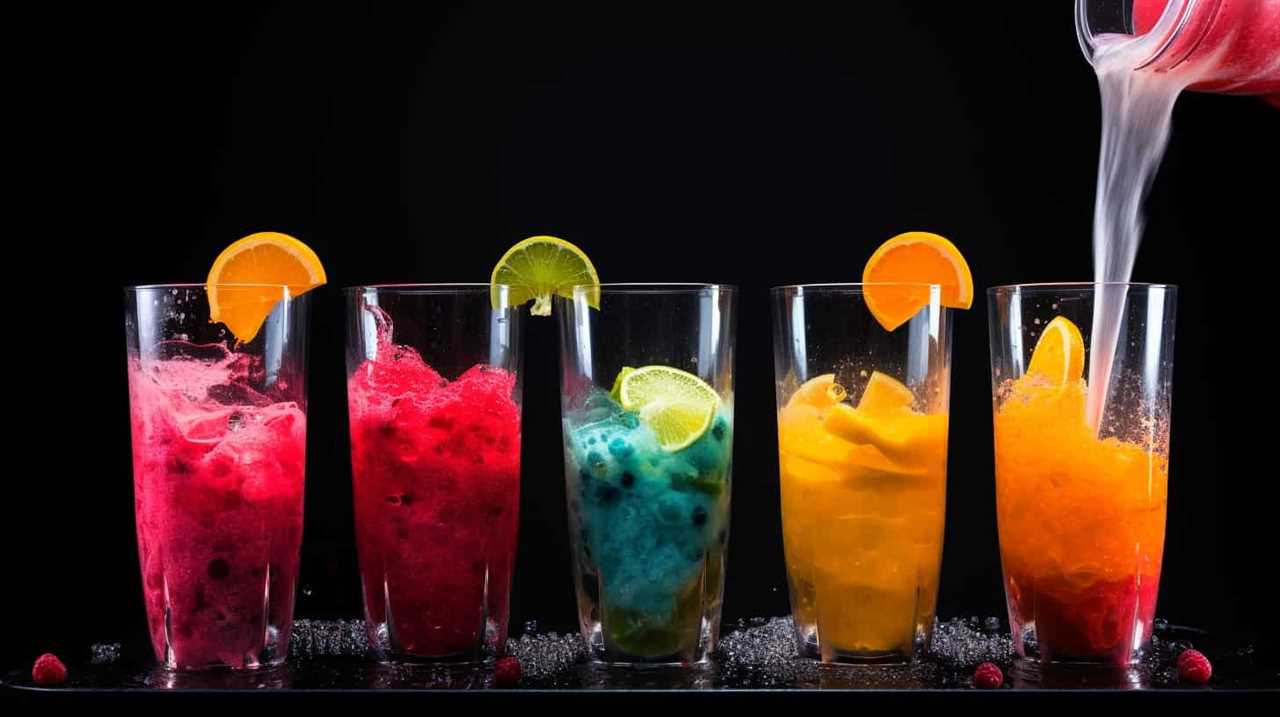
When it comes to orange juice, color is a crucial factor to consider. As oranges are exposed to air, an oxidation process occurs, which leads to changes in color. Fresh orange juice has a vibrant orange hue, indicating its freshness and high nutritional value.
However, as time passes, the juice may undergo a color change, turning dull or brownish. This change in color is a result of the oxidation process, which affects the flavor and quality of the juice. It’s important to note that while a change in color doesn’t necessarily mean the juice is bad, it does indicate that the juice is losing its freshness and shelf life extension.
Therefore, it’s advisable to consume orange juice when it’s at its freshest, as indicated by its vibrant orange color.
Strange Smells in Orange Juice
When it comes to evaluating orange juice, we should be cautious of any strange smells or odors. A fresh, pleasant smell is indicative of good quality orange juice. However, if you notice any unusual or off-putting odors, it may be a sign that the juice has gone bad. These smells can range from a sour or fermented scent to a rancid or moldy aroma.
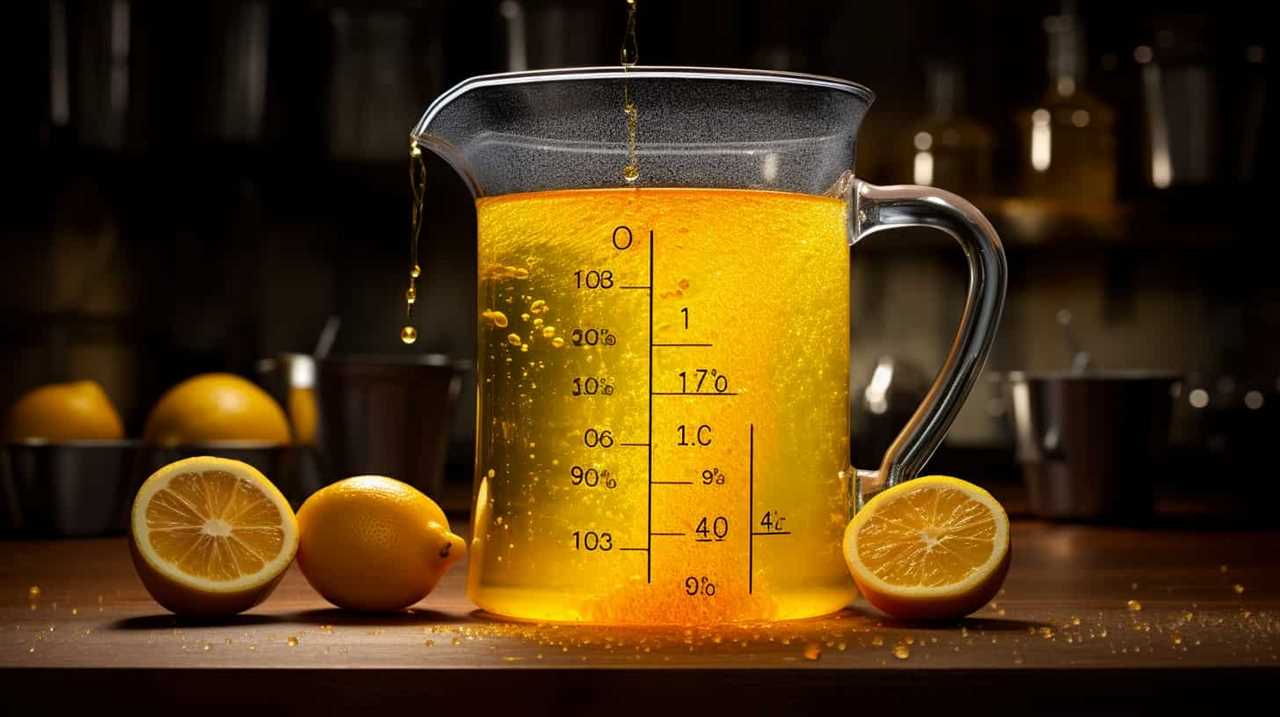
It’s important to note that while some natural variations in scent can occur due to the specific variety of oranges used, any strong or unpleasant smells should raise concerns. If you have citrus fruit allergies, it’s especially important to pay attention to the smell of orange juice, as it could indicate the presence of spoilage or contamination.
Ensuring the quality of orange juice is essential as it’s a popular beverage known for its health benefits, including being rich in vitamin C and antioxidants.
Off Taste of Orange Juice
Our taste buds can detect even the slightest hint of an off taste in orange juice, which can indicate that it has gone bad. The taste of orange juice should be fresh, tangy, and slightly sweet. If it tastes sour, bitter, or fermented, it’s likely spoiled.
One common cause of an off taste in orange juice is the use of overripe oranges. When oranges become overripe, their flavor profile changes, resulting in a less pleasant taste. Another factor to consider is the expiration date. Orange juice that has passed its expiration date is more likely to develop an off taste. It’s important to check the expiration date before consuming orange juice to ensure its freshness and quality. Additionally, improper storage conditions, such as leaving the juice at room temperature for extended periods, can lead to the development of unpleasant flavors. Storing orange juice in the refrigerator helps maintain its freshness for longer. For those exploring different juice options, aloe vera juice flavor tips suggest pairing tart juices with milder flavors to balance the overall taste.
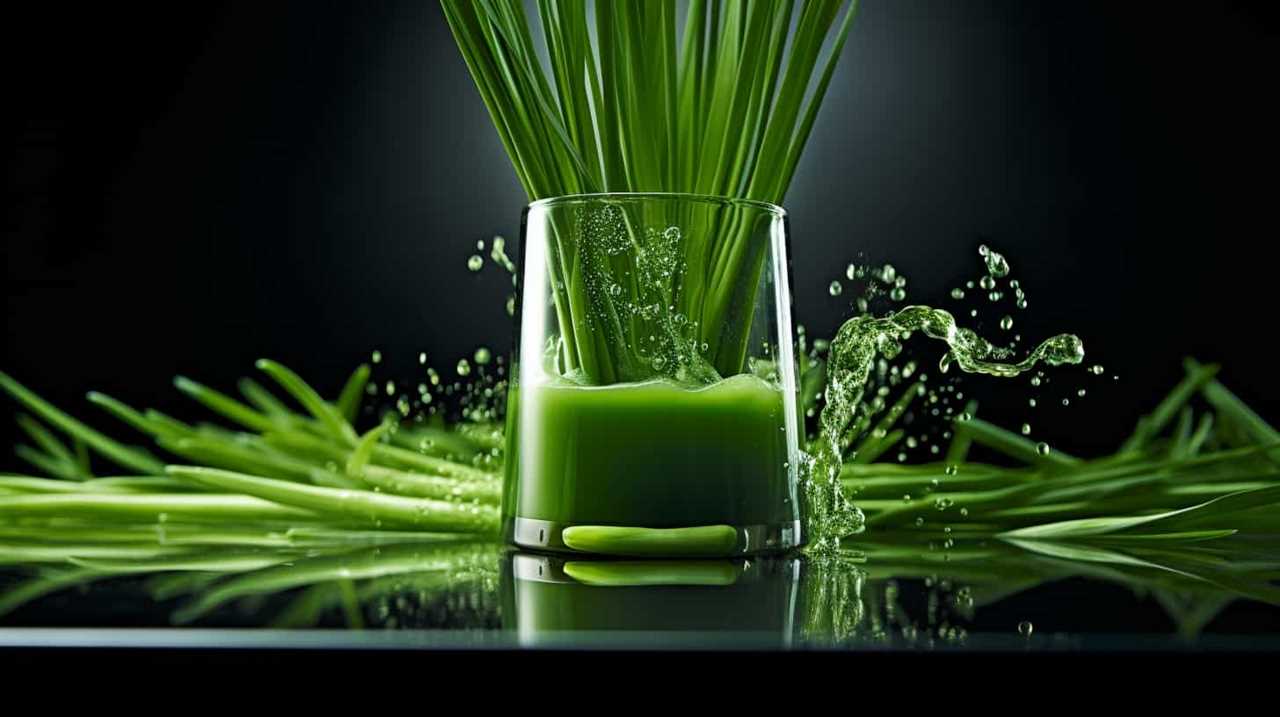
Now, let’s move on to discuss the texture changes in orange juice.
Texture Changes in Orange Juice
As we explore the texture changes in orange juice, it’s important to note that certain factors can cause it to become thicker or develop sediment. One common texture change in orange juice is pulp separation, where the pulp separates from the liquid and settles at the bottom. This can occur naturally over time, as the pulp particles become denser and sink.
Another factor that can affect the texture of orange juice is the expiration date. As orange juice ages, it may start to develop a thicker consistency and even form sediment. This is a result of the natural breakdown of the juice’s components. Therefore, it’s crucial to check the expiration date on orange juice and consume it before it reaches its expiration date to avoid any undesirable texture changes.
Mold or Growth in Orange Juice
We need to be aware of the possibility of mold or other growth occurring in orange juice. Mold can develop in orange juice if it isn’t stored properly or if it has passed its expiration date.

To prevent mold growth, it’s important to follow these steps:
- Store orange juice in the refrigerator at a temperature below 40°F (4°C).
- Check the expiration date on the bottle before consuming. Discard any orange juice that has expired.
- Keep the container tightly sealed to prevent air and moisture from entering, as these can promote mold growth.
Regularly inspecting orange juice for any signs of mold or unusual growth is essential. If you notice any discoloration, a strange odor, or visible mold, it’s best to discard the juice to avoid any potential health risks.
Frequently Asked Questions
Can Orange Juice Go Bad if It’s Stored in the Freezer for Too Long?
Frozen orange juice can potentially lose its nutrients and change its taste if stored in the freezer for too long. It is important to check for signs of spoilage before consuming it.
How Long Can Orange Juice Stay Fresh in the Refrigerator Once It’s Opened?
Once opened, orange juice can stay fresh in the refrigerator for about 7-10 days. To maintain its freshness, store it properly by keeping it tightly sealed and at a consistently cold temperature. If the orange juice develops an off odor, flavor, or appearance, it’s best to discard it to avoid any potential health risks. Factors like exposure to air and varying temperatures can influence how long orange juice lasts, so it’s crucial to handle it with care. Always check the expiration date as a general guide, but remember that proper storage can extend its freshness slightly. Additionally, avoid leaving the orange juice out at room temperature for extended periods, as this can significantly shorten how long orange juice lasts. Freezing the juice can be another option to extend its shelf life, but be aware that this may alter its texture and taste once thawed. By following these precautions, you can ensure your orange juice stays fresh and safe to consume.
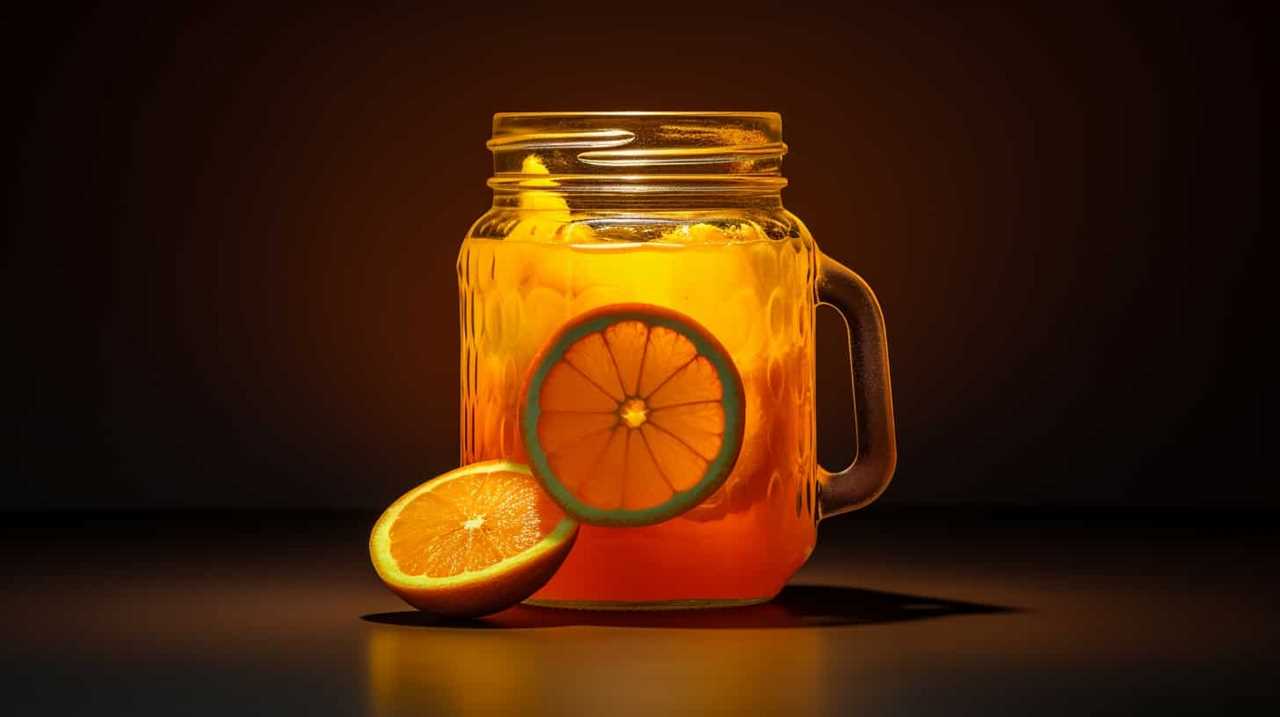
Is It Safe to Consume Orange Juice That Has Been Left Out at Room Temperature Overnight?
Left out orange juice may not be safe to drink as it can harbor harmful bacteria. Signs of spoiled orange juice include a sour smell, mold growth, and a change in color or taste.
Can Orange Juice Develop Harmful Bacteria if It’s Past Its Expiration Date but Still Looks and Smells Fine?
Orange juice can cause food poisoning if it develops harmful bacteria, even if it looks and smells fine. Signs of spoiled orange juice include a sour smell, mold growth, and a change in color or taste.
Does the Nutritional Value of Orange Juice Decrease as It Starts to Go Bad?
As orange juice goes bad, its nutritional value decreases. The longer it sits on the shelf, the more nutrients it loses. Signs of spoilage include a sour smell, off taste, and mold growth.
Conclusion
In conclusion, determining if orange juice is bad requires careful observation of color changes, strange smells, off taste, and texture changes. Just like a detective investigating a case, we must rely on our senses to detect any signs of spoilage.
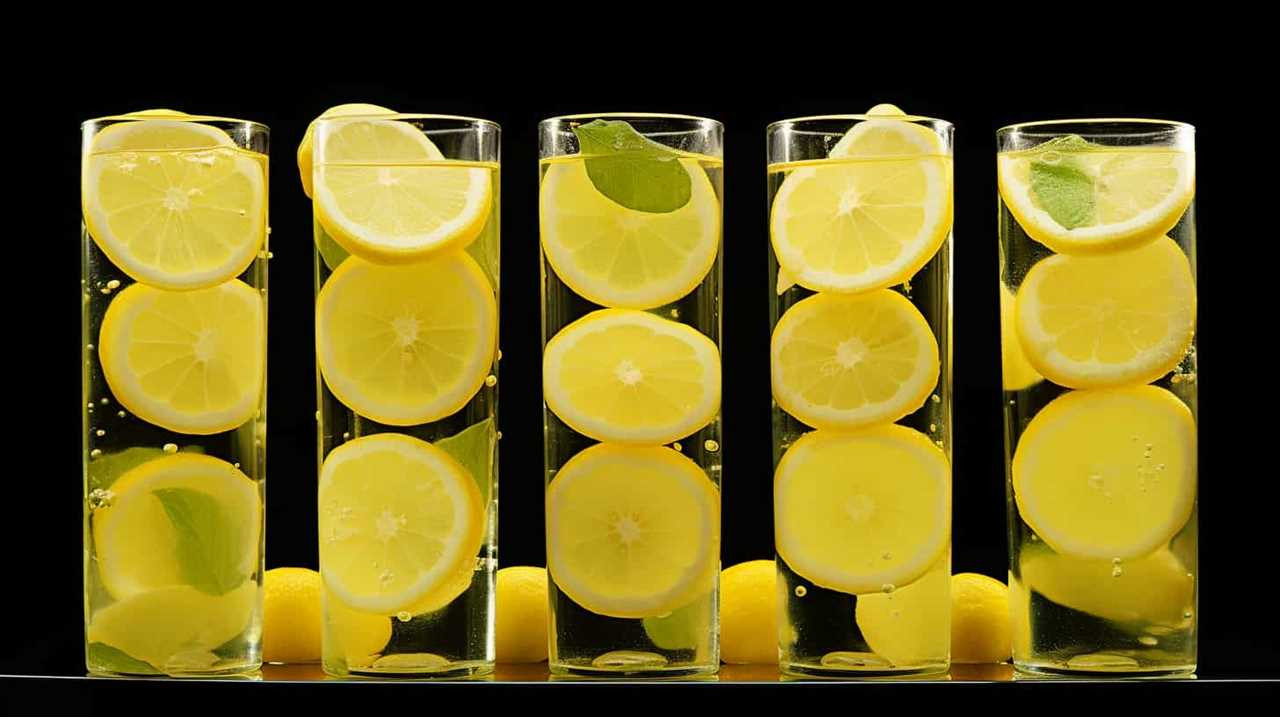
If we detect mold or growth in the orange juice, it’s a clear indication that it’s no longer safe to consume. By remaining vigilant and attuned to these indicators, we can ensure that our orange juice is always fresh and enjoyable.
Susannah expertise lies in researching and compiling evidence-based content on juicing, nutrition, and overall health. She is committed to ensuring that The Juicery World offers accurate, up-to-date, and trustworthy information to empower readers to take control of their health. Susannah’s goal is to inspire individuals to embrace juicing as a way to nourish their bodies and live their best lives.
-

 Vetted2 months ago
Vetted2 months ago15 Best Juices for Diabetics: Refreshing Options That Won’t Spike Your Blood Sugar
-

 Vetted2 months ago
Vetted2 months ago15 Best Decaf Coffee Options for Flavor Lovers Who Need a Caffeine Break
-

 Vetted2 months ago
Vetted2 months ago15 Best Espresso Ground Coffees to Elevate Your Morning Brew
-

 Vetted2 months ago
Vetted2 months ago15 Best K-Cup Coffee Pods for a Perfect Brew Every Time
-

 Vetted2 months ago
Vetted2 months ago15 Best Beans for Espresso: A Guide to Perfecting Your Brew
-

 Vetted2 months ago
Vetted2 months ago15 Best Kona Coffees to Savor the Rich Flavors of Hawaii
-

 Vetted2 months ago
Vetted2 months ago15 Best Cold Brew Coffees to Keep You Refreshed All Summer Long
-

 Vetted2 months ago
Vetted2 months ago15 Best Inexpensive Espresso Machines That Brew Quality Coffee on a Budget



